What are dead giveaways? McMansion Landscaping
I have been trying to do a little independent research on period-appropriate landscaping.
I really don't see too much on this subject, oddly enough. Maybe I am using the wrong search terms.
But certainly landscape architecture done today, the lighting, the hardscape, even plant choices, reflect an era and fads as much as the homes and interiors do. We can easily point out the cliches there.
What are the cliches to avoid in landscape design if you want a setting that doesn't look like 2014?
PS Most gardening forums I have tried on here are specialty and not terribly active --- if you would recommend one for this question, let me know.
Comments (97)
joaniepoanie
9 years agolast modified: 9 years agoMtn.....your lilacs are beautiful!
You mentioned that you were unsure if the house was built as a summer home for a well to do family or if it would be considered a typical middle class home for 1906. That would be a fun thing to investigate! Real estate records and/or the local historical society may have a history as to who has owned the house over the last 100 years.
dedtired
9 years agolast modified: 9 years agoRelated Professionals
Boise Interior Designers & Decorators · Centerville Interior Designers & Decorators · Van Wert Interior Designers & Decorators · Washington Interior Designers & Decorators · Dallas Furniture & Accessories · Philadelphia Furniture & Accessories · Rock Hill Furniture & Accessories · Tulsa Furniture & Accessories · Genova Furniture & Accessories · Bethlehem Custom Artists · Ocean Springs Custom Artists · Decatur Lighting · Hanover Park Window Treatments · North Tustin Window Treatments · Rochester Hills Window TreatmentsBumblebeez SC Zone 7
9 years agolast modified: 9 years agoWell, most perennials do have to be dug up and divided every few years more or less and perhaps that is what he is going. Then depending on what it is, he may move them to another out of sight spot for them to get big again and move them to the forefront when they are at their peak.
So it's a lot of moving around to keep beds looking top notch.That is ok. It is a part of true gardening.
davidrt28 (zone 7)
9 years agolast modified: 9 years ago"I think some people over fertilize which makes things get too big."
It only makes them get big faster, not actually bigger. Any plant that is not dying is in the process of growing to its default mature size, whether it is fertilized or not.emmarene9
9 years agolast modified: 9 years agoThese are the only sore thumbs I can imagine:
A large variety of plants
An over abundance of poured concrete.
Non local stone
Any of the currently popular metal pieces and lighting, brushed nickel for examplePeople used to have bonfires so I would disguise a fire pit to resemble one.
You have already avoided the worst thing about McMansions. A very big house on a small lot that does not fit the neighborhood.
I like the plants mentioned. I want to add Spirea and Viburnum but only if they do not get blight as was mentioned about boxwood.
I know whatever you choose will come out well.
juliekcmo
9 years agolast modified: 9 years agoTalls. Smalls . Balls
Tall arborvitae or yew
Small pops of color annuals
Balls. Globe shaped like box woodsTo me that is the typical suburban landscape cliche. That's what we did when we had our last house on the market.
theresa2
9 years agolast modified: 9 years agoAt the risk of being preachy, I plead you all to consider incorporating more non-nativar native plants into your landscapes to support wildlife, conserve water, reduce pesticide use and to give your homes a sense of place on the planet. Collectively, we can change our sense of landscape aesthetics and restore lost corridors of wildlife habitat. It need not be an all or nothing approach, every little bit helps.
As far as McMansion landscapes, I always equate this style of landscaping with conspicuous flowering foundation shrubs sporting colorful leaves of red, pink, purple, yellow and multi-colored variegation--mixed in with evergreens of blue and dark green--along with far too much lawn and hardscaping.
mtnrdredux_gw
Original Author9 years agolast modified: 9 years agoTheresa, The people we are considering tell me they use only native plants. ( I had to look up nativar, my guess is they include those). We currently have deer, and we asked not just "which plants are deer resistant" but also "what plants are they currently coming here for that we need to keep?" We have not discussed pesticide use, but we don't use any on our property here in CT, which is pretty large and pretty extensively landscaped, and we anticipate not doing so in Maine either.
Glad to hear you agree on hardscaping. I said to my DH, and I was almost afraid to ask but ... does anyone do retaining walls with railroad ties (or the non creosote equivalent) anymore? Or is that just so declasse to even ask?
Julie, LOL!! Talls, we have; we have some huge trees. I don't like many annuals. And anything too sculpted would be all wrong.
Emmarene, I think those are very good guidelines for us. Thank you.
Thanks, Joanie!
Dedtired, ya, uhh, no!
palimpsest
9 years agolast modified: 9 years agoThat's what I meant. The first set of bushes got fertilized like crazy and after about 22 years a lot of them were removed. The ones that replaced them have been there the same amount of time more or less and have not grown nearly so much in size.
mtnrdredux_gw
Original Author9 years agolast modified: 9 years agoOkay, so not railroad ties, actually, but I wonder about something like this?
By way of background, the yard steps down in pretty much three levels. The midlevel we want to put a pool. It will be sunken a bit and probably require some sort of a retaining wall. We want grass up to the pool, but in furniture areas we will need some hardscape, most likely irregular stone patio with green in between (sorry can't recall the correct term). I don't love the idea of stone walls AND a stone "floor". So what if the wall were shingled in cedar, like our house (it will age to grey). Too weird?
Or, I could also do a stone wall and a wood "floor" if I did a sort of a wooden deck for the furniture area.
NOT STEPS like this; just an idea for a wall

This post was edited by mtnrdredux on Wed, Dec 3, 14 at 23:13
mtnrdredux_gw
Original Author9 years agolast modified: 9 years agoOTOH,
This doesn't look like too much hardscape to me ... here they used brick on the "floor"; i would not have thought introducing a new material would be wise, but if it is old and faded like this...
I like everything about this photo. The stone wall is much like the existing one we have.
theresa2
9 years agolast modified: 9 years agoThat's great that you are using native plants in your landscape. It's going to be a beautiful garden that will only serve to enhance your already beautiful home and property. And with the addition of a more diverse wildlife population you'll be adding an additional layer of interest and beauty to your landscape.
As far as deer damage, My landscape is very diverse which helps hide and protect it from the detriments of deer browsing. For instance, I don't have a row of arborvitaes to make browsing easy for deer to peruse. I protect highly susceptible young trees and shrubs from deer with fencing until said plants are big enough to tolerate annual stem tip browsing which usually occurs in spring after a flush of new tender growth. Deer regularly feed on my perennials, but I have so much diversity and abundance that the damage is not noticeable by anyone but me. It's a balance.
It's difficult to avoid nativars because that is what the industry offers in abundance-it's what sells. Nativars are clones propagated to preserve outstanding features of a chosen parent plant. Cloning decreases diversity in the landscape. Unique DNA among species makes for a healthier landscape and increases fruit production through cross-pollination. I have nativars in my landscape, so I'm not above reproach, but I do my best to acquire and propagate non-nativars whenever possible.
mtnrdredux_gw
Original Author9 years agolast modified: 9 years agoThanks, Theresa, that's helpful. I am guessing they chose a term like "nativars" because it sounds like "native lite" so most people will wave it in! Now I know what to ask our LA.
Annie Deighnaugh
9 years agolast modified: 9 years agoI'm partial to stone walls...I think the shingled walls look odd. I think a mix of materials between the walls and the 'floor' work fine.
I love what you're doing with the pool. There's a house nearby that built their whole deck and back yard around the pool, which looks great for 3 mos in the summer, and the rest of the year, they are overlooking a sea of tarp. Not good.
Perhaps the link below will help inspire you and your LA....the videos are broken down by era.
Here is a link that might be useful: Lost gardens of New England
Annie Deighnaugh
9 years agolast modified: 9 years agoBTW, there are sprays they can use to keep deer away, but we just stake out ivory soap around the plants we know are vulnerable....some folks say Irish Spring works as well. The deer don't like the smell and stay away.
robo (z6a)
9 years agolast modified: 9 years agoTo me shingles + backfilled dirt would seem to = rot. So I'd be partial to more stone. I love the inspiration pic with the brick. I just love brick patios. But also stone. Not sure what's going on with the furniture arrangement in this pic but love the formalish landscape.
{{gwi:2141190}}
This post was edited by robotropolis on Thu, Dec 4, 14 at 8:19
three3apples
9 years agolast modified: 9 years agoThis is a great thread.
I found myself wondering the same thing. I scoured houzz and bought old books with photos and drawings of historic gardens. We have a lot of hard scaping, but it's all native stone, no veneer, it's mostly all getting a little mossy already :), and it fits with the style of our house. For planted elements we only have an apple tree, boxwood and hydrangeas so far. I plan to add myrtle and another fruit tree next year. We have no ground lighting, no mulch, no trendy anything. It's not done yet, but I can include pics of progress.mtnrdredux_gw
Original Author9 years agolast modified: 9 years agoHi Annie,
How are you feeling, btw? Thanks for the links -- a few of those are very near the summer house. Pools visible from the house are suboptimal unless you are in CA or FL etc. Plus I kind of like it to be a bit of a destination, and in this case it will be nestled in a little bit of a hollow bordered by the old stone wall. I think it will give it a nice feel.
Robotroplis, Sigh, that is so gorgeous. I think we want something less formal here though. Your image is a lot like the look we used in our first house, a Brick Georgian Colonial. I know how it feels to have that look one spring, go thru a long winter (or even just a wayward large dog IFYKWIM) and next spring have a gap in your boxwood parterre! For this project I think there should be grass/moss between the stones, and the stone should be irregular (though probably just one color).
Hi Threeapples, I am sure we'd all enjoy seeing what you have done. The more formal the house, I think the more hardscaping it can take. For some reason I also think a stone or brick house can take more hardscape then a shingle house (our beachhouse is shingle). Not sure why; maybe it seems imbalanced to me to have say, massive stone walls and a "light weight" house. So that is something I am considering too. Path lighting may be tricky. Hopefully I can get something copper and make it verdigris. I will need some because of grade changes and the likelihood of using the pool/hottub/firepit at night.
PS Robo; the shingle wall is only faced in shingles.
This post was edited by mtnrdredux on Thu, Dec 4, 14 at 9:41
lazydaisynot
9 years agolast modified: 9 years agoMtn, I really like the photo you posted with the mix of materials.
lazy_gardens
9 years agolast modified: 9 years agoWe will probably be there most Jun,Jul, Aug, and then only 2-3x during the year,
That REALLY sets the parameters ...
1 - Must survive in Maine, along the coast (that knocks out a lot of things)
2 - Needs minimal spring, fall and winter inputs from a gardener.
3 - Looks best (flowers, etc) in the summer. Something with bright winter berries of colorful bark would be good.Check out the old neighborhoods to see what's flourishing in similar locations, find the local gardening society, and ask the historical society for pics of similar houses from the 1910s and 1920s , after the gardens had matured and the fragile things died out.
Your best bets would be zone-appropriate, wind-tolerant evergreens and shrubs, also perennials that will be underground for the worst of the weather. Use these for the "bones". Go nuts with fast-growing annuals in the summer for the fluff.
marcolo
9 years agolast modified: 9 years agoArborvitae are another McMansion classic. Instant privacy.
One look I like is the formal garden artfully gone to seed. You could do some formal bones around the patio, but age and moss up the hardscape and fill in with softer, more informal plantings.
mtnrdredux_gw
Original Author9 years agolast modified: 9 years agoMarcolo, you've hit the nail on the head; I kept thinking I want the landscaping equivalent of patina.
Fori
9 years agolast modified: 9 years agoThis is a fun book: Practical Landscape Gardening by Robert B. Gridland.
As I was looking through it, this made me laugh:
{{gwi:2141191}}
If this isn't a McMansion planting I don't know what is. McMansion plantings have been with us for a long time--this book was published in 1916, not the twenties as I had recalled.
Fori
9 years agolast modified: 9 years agoOops, it's Cridland not Gridland and it's been googlecized so it's free on google books but not with the color plate on the front cover depicting a thoroughly impractical marble gazebo overlooking a pond...
Bumblebeez SC Zone 7
9 years agolast modified: 9 years agoFori, that is a perfect example of Mcmansion landscaping to me.
I have seen it done many times on garden tours in extremely gardener groomed/planted landscapes.It is neat/cool/eye-catching though. And, for a micro second makes me want to collect/have miniature conifers.....
outsideplaying_gw
9 years agolast modified: 9 years agoFori, that's about a dozen or so too many conifers. Yikes!
Yes, marcolo, and gooster's earlier post really nailed it. I think if you look around you can find a mix of beautiful, soft landscape plants, both native and cultivars, that will work in your zone without resorting to arbivitae and shrubs that must turn into meatballs.
Like I said, I love seeing pretty bark, like red-twig or yellow-twig dogwood, river birch, buckeye, and others. And there are so many wonderful evergreen shrubs to use as a backdrop that are better than arbovitae that are too numerous to count....Chamaecyparis (some beautiful color varieties and growth habits within this), spruce, pine, boxwood (hot a personal favorite due to disease), dwarf cypress (Hinoki is a good one), yew (especially the low-growth variety). And then the pretty flowering shrubs like hydrangeas that have been mentioned and others to provide color with berries (callicarpa or Beautyberry is a favorite for leaf color and those luscious berries), dwarf nandina varieties, old- fashioned butterfly bush (they have dwarf varieties now in a beautiful blue-purple bloom) and weigelia, knockout roses, and on and on.
I think someone already mentioned planting too close to the foundation. That, to me, is a sure sign of builder-grade or uneducated landscape design.
tishtoshnm Zone 6/NM
9 years agolast modified: 9 years agoI would include some edibles too. Beach plums and/or sea kale if they hardy to your zone.
suero
9 years agolast modified: 9 years agoHave you seen Coastal Maine Botanical Gardens?
Their What's in Bloom page lists the plants by month. You might consider this a starting point for your landscaping:
April
Early spring bulbs
Spring ephemeralsMay
Asarum europium/European ginger
Tiarella cordifolia/foam flower
Narcissus/daffodil
Viburnum
Magnolia
Enkianthus/Redvein
Rhododendron
AzaleaJune
Azalea
Rhododendron
Cornus kousa " Dogwood
Cornus sericea " Redtwig Dogwood
Paeonia " Peonies
Viburnum
Geranium macrorhizum
Iris ensata
Iris siberica
Rosa " Rose
Trillium
Cypripedium " Lady’s SlipperJuly
Campanula " Bellflower
Hosta
Astilbe
Hydrangea
Spirea
Clethra " Summersweet
Rogersia
Rosa " Roses
Delphinium
Lavendula " Lavender
Geranium ‘Roseanne’
Water lily
Japanese Iris
Veronica
Hemerocallis " Daylily
ClematisAugust
Nepeta
Miscanthus
Rudbeckia
Sedum
Chelone
Astrantia
Cimicifuga
Water lily
Hemerocallis " Daylily
Hosta
Clematis
Rosa " Roses
Delphinium
Russian Sage
Hydrangea ‘Endless Summer’September
Angelica
Cimicifuga
Aster
Nepeta
Astrantia
Veronica
Veronicastrum
Anemone
Clematis
Rosa " Roses
Coreopsis
Eupatorium
Russian Sage
Aconitum
Hydrangea ‘Endless Summer’October
Many September flowers are still in bloom in October.
Many annuals
Cranesbill (Geranium)
Hydrangea
Plumes of grasses from small to tall
Monk’s hood (Aconitum)
The last roses of summer
Berries and seed pods
Magnificent fall foliage in trees and shrubs
And more, until our first frost…and even beyondWinter
Harry Lauder’s Walking Stick
Witch hazel
Bright-red stems and trunks
Berries and pods
Plumes of tall grassesHere is a link that might be useful: Coastal Maine Botanical Gardens Boothbay. maine
kswl2
9 years agolast modified: 9 years agoHmmm, I think trying to "age" gardens prematurely is also a sign of the McMansion phenomenon. Planting gardens so they look good right away but improve with age is a true art. "Artfully" arranging landscaping, including giving hardscape instant "patina," is not too different from planting arborvitae for instant effect. Isn't anyone else getting tired of the "I want something new to look like it's always been here" look?
I think there is more value in making sure a thing--- an addition, a garden--is beautiful and contextual and owning the fact that it is new and letting it age naturally.
cyn427 (z. 7, N. VA)
9 years agolast modified: 9 years ago"Isn't anyone else getting tired of the 'I want something new to look like it's always been here' look?" Yes, kswl, I am. That is really what sets a place apart, I think. The fact that it was created new and allowed to age naturally. The copper gutters were once shiny and you know the patina is natural not forced. I can understand the desire to do that (instantly age a thing), I suppose, but it does seem a bit affected and it really doesn't take all that long for plants to grow into a place or copper to turn green/brown, so to speak. I feel the same about distressed furniture.
Anyway, one note about plants. Do not worry about looking up crape myrtles, mtn. They are only hardy to zone 6 and marginal there. Zones 7-9 are usual for them. That is why they are nicknamed southern lilacs. Also, lilacs may very well bloom a month or so later in Maine than in CT. Ask your designer. I love to garden and would suggest that since you aren't doing it yourself (assuming that you will have someone in Maine as you do in CT), you ask the designer for ideas rather than the other way around. With a list from him or her in hand, then you could research, but the coast of Maine can be an unforgiving place at times and there are many wonderful plants that just won't work there. There are also many that will, but trust your designer. If you give him the palette you want, he will be able to show you many beautiful choices.
marcolo
9 years agolast modified: 9 years agoLol. I don't think mntnrdredux is planning on crackle painting her viburnums.
Bumblebeez SC Zone 7
9 years agolast modified: 9 years agoIf this were fabric, furniture or house, you would know something about them. But you do seem removed from plants other than how they look.
Really, learning about plants in your area is not that hard and will help you enormously in talking to a landscape designer.
(how will you know if he takes advantage of you? plantwise? "I will put this cheap plant here instead of this great, expensive plant ...and hahahaha, and use natives!!!! they all love natives!" )Native plants are really trendy right now (insert: gluten, paleo, carbs, vegan, ... to get the picture)
and I am not on the native bandwagon. I avoid plants on the invasive list -(although they aren't all like evil kudzu in aggressiveness, btw-) but if we only used natives, well, remove all those gorgeous hydrangeas and lilacs to start. Along with nearly everything else that we all like. It varies by zone ( you could start by learning about different zones) but native plants are generally the unmake-uped face, the scrubbed wood floors and the Christmas tree decorated with popcorn and cranberry strands.kswl2
9 years agolast modified: 9 years agoNo I was thinking more about ageing and "mossing up" the hardscape :-)
If the conditions aren't right the moss will not play along.....sometimes buttermilk helps but not unless moss was destined to be there anyway.
kswl2
9 years agolast modified: 9 years agoNo I was thinking more about ageing and "mossing up" the hardscape :-)
If the conditions aren't right the moss will not play along.....sometimes buttermilk helps but not unless moss was destined to be there anyway.
mtnrdredux_gw
Original Author9 years agolast modified: 9 years agoKSWL, I think one difference too, is that we are starting with a 1906 house and an established landscape. It will be greatly disrupted by the insertion of a pool in one ( partly hidden) area, but a lot of it will stay. So it is more about marrying and not having anything jarring than it is about making de novo look antique.
Bumble, I do know my zone. And the names of a few things. But while a lot of folks have taken this thread to be about plant materials, that was not necessarily my focus. I know enough to know that the list of things that will make sense is probably short. I am really thinking of other aspects that might date landscapes, some of which we have discussed.
Cyn, Yes, we are using a LA and we will use someone for maintenance. Sometimes, though, designers use the same things over and over so it's good to have your own ideas as well. Thats funny, I could have my lilacs here in May and then chase them up the coast in June! Oddly though, I have the weather on my phone and the temperature is almost the same as here, sometimes it's even a tad warmer in Maine. We are very Southernmost in Maine, and being on the water is also more temperate.
Thanks, Suero, I had been to that site..
Thanks , Fori
kswl2
9 years agolast modified: 9 years agoI think there is a lot to be said for using plants native to one's area. Aside from the obvious reasons, I have noticed down here in zone 7 that natives do not grow or flower with the abundance of zone imports, especially hybrid ones. I like that look of more sedate blooms or sparser blooms; when I see a lush abundance of blooms and foliage it looks to me as though people are trying to ape the Disney park look. It also says "fertilizer," which in turn ups the water requirements of any plant--- undesirable and also inadvisable in today's climate change. I'm not above using non-natives and I still use invasive English ivy but our lawn service keeps a pretty close eye on it.
Point taken about marrying the old and the new, mtn, but in the case of a pool and hot tub you are adding twenty-first century amenities to a lovely old house that deserves them. Since you are doing this they'll be beautiful and the building materials will be chosen for the sensibility of the property and existing landscape, but they'll still be new......and I think that is what MS used to call a Good Thing :-)
(And I didn't mean to disparage arborvitae---in some situations there is a lot to be said for them--- not in a firing line along the street, but a well placed tree like that can screen a multitude of things and provide tall structure to a landscape.)
mtnrdredux_gw
Original Author9 years agolast modified: 9 years agoI think arborvitae was one of the first plant names I learned (bush? tree?), because I recall hating it so much. But the ones i hated were a Dr. Suess-ish yellowy green. I have since seen some that are not all that awful. Thankfully, we won't really need them, because we have great deciduous tree cover.
neetsiepie
9 years agolast modified: 9 years agoTo avoid cliches in mordern landscaping-just drive thru new subdivisions. The developers tend to go with the same landscaping company/designer as a cost saving measure. They get all their materials, including hardscaping, in bulk and every.single.one. get the granite/stainless/cherry cabinet equivalent of 2000's era kitchens. BECAUSE IT'S COST EFFECTIVE! Ditto landscape designers/architects.
For period appropriate, peruse old photos and then get with your LA to bring it to modern aesthetics.
When I retire I plan to do landscape design-with a focus on natives because natives are simply the very best choice to use and helps to avoid that cookie-cutter look.
Natives soap box here-there is less (to no) need for fertilizers, extra irrigation, pest control, deer control, etc. Natives help to filter the run off and clean our water. They attract bees and beneficial insects which in turn help our agriculture. They attract birds. They have a beneficial effect to the area rather than an impact. GO NATIVE. You'd be surprised just how gorgeous native planting can be if done right. I honestly get sick when I go to new construction sites and see the same freaking thing-mulch, ornamentals, stone works and sod lawns. All I see are gardeners coming with their gas powered leaf blowers and bags of poison and inground sprinklers contributing to run off. GO NATIVE!
cyn427 (z. 7, N. VA)
9 years agolast modified: 9 years agoMake room for me on that soapbox, Pesky! :)
mtnrdredux_gw
Original Author9 years agolast modified: 9 years agoFYI, don't worry, we are totally anti-pesticide. (kind of don't think it makes sense to go out of our way to eat organic and than loll around on pesticides).
I also told him we want see instead of sod (i much prefer the look) and that we don't want a sprinkler system (glad to hear he agrees). We have seen the lawn over last summer and it is fine in August, the hottest month.
junco East Georgia zone 8a
9 years agolast modified: 9 years agomtnrdredux--
I believe you mentioned some existing roses. If you want more you don't have to settle for knock outs. There are sources that will help you find roses that will thrive in your area with no spraying or other regular upkeep. Start with the Antique Rose forum over on the garden side of Gardenweb.alex9179
9 years agolast modified: 9 years agoMtn, you have wonderful taste and I'm looking forward to this evolution as much as all the others you've allowed us to glimpse over the years. The Antique Rose forum is a fabulous suggestion, too!
Overdone, cookie-cutter to me is colored mulch and planting trees/large shrubs in a space that doesn't allow the space for them to grow to maturity.
I lay mulch twice a year. Once in the spring and in the winter (far south here). My neighbor has live oaks and every spring he brings over 20 bags of leaves-they think I'm crazy. Some I use immediately, I apply it to areas that need it later in the year, and some I let decompose in the bags until the next spring for fertilizer when my supply is replenished.
Thanks to those who spoke up for the maligned arborvitae. It's overused, but I really like the one I planted for winter interest. I love conifers and other evergreens of that nature, but they don't grow well here. This guy fills that yearning ;) I also have a nandina, which are everywhere but this guy is one of the few things here that has fall color. Oh, and maiden hair grass. I don't care if they are overdone. Wonderfully hardy and love the movement when it's windy. Common plants does not mean a common landscape.
Circus Peanut
9 years agolast modified: 9 years agoMtn, I'm very late to the party, but being a neighbor to the close north of your new place, I can assure you that you'll probably have lilac through to at least mid-June most years.
This is more in the way of input on floral genre than on the layout you're really looking for, but do consider Rosa Rugosa. Extremely hardy, very Maine, very native and truly lovely for the duration of your target months. Plus rosehips by the bushel for all your winter tea needs.
One of the nation's expert on rugosas, Suzy Verrier, happens to run a lovely historic 1850's farm/nursery up by Phippsburg, on one of the peninsulas off Route 1 right at Bath. She sells all sorts of natives and hybrids; lots of roses but not just.
It's worth it just for the gorgeous drive there (at end of same route: Popham Fort and beach) and they have a surprisingly fabulous little in-house cafe as a reward.
Suzy's an amazing resource and can consult with you on all sorts of native perennials for your specific applications. Plus she has incredibly decent pricing on her plants. The rugosas and clematis we've gotten from her have absolutely thrived here in urban Portland.
Here is a link that might be useful: rugosas & other roses at North Creek Farm
Circus Peanut
9 years agolast modified: 9 years agoPS: Fori: many laffs for the Gridland book, thank you for schnuffling that one out!
Circus Peanut
9 years agolast modified: 9 years agoPSS: Mtn, I forgot to mention one book I have that might be a decent visual resource: Outside the Bungalow by Paul Duscherer et al. He's tracked down a number of contemporary gardening plans from your target era. If you haven't seen it, might inspire?
Here is a link that might be useful: link to Amazon page for book
kitchendetective
9 years agolast modified: 9 years agoI am going to go out on the proverbial limb here: I assume one of these is out of the question?
{{gwi:2141193}}
unclehippie
9 years agolast modified: 9 years agoThese days, it seems like every mcmansion has some sort of dwarf weeping tree that is visible from the road. I doubt those were common in the early 1900s. Also, I don't think hostas became popular until mid-century, so you might want to avoid them. I would recommend planting ferns in shady areas instead.
In looking at pictures of my relatives' homes from the early 1900s, they did not have landscaping along each foundation. They landscaped in front of their porches and in their backyards. They did not feel the need to have extensive plantings sprawling along each side of the house like you see in mcmansion neighborhoods today. My relatives also planted periwinkle or ivy (I can't tell from the photos) in areas where they wanted to keep out unwanted weeds instead of using colored mulch.
There is an old dutch colonial in my neighborhood in Upstate New York that has traditional landscaping. The homeowners have a row of large old sugar maple trees in front of their house, spruce trees along the property borders and simple coniferous shrubs planted below the front windows of their home. These folks have a fringe tree near the end of their driveway, and some old lilac bushes at each of the back corners of their house. Boring? Yes, maybe. But to me their landscaping looks neat and tasteful.
cearbhaill (zone 6b Eastern Kentucky)
9 years agolast modified: 9 years agoLate to the party, but for me McMansion landscaping is a home where, even with a three second drive by, you can tell that the local landscaping company designed, installed, and maintains the whole thing.
Plants are chosen for ease of care and hardiness with no thought to the personality of the home or it's occupants. It is rows of the most common conifers, the hardiest boxwoods, a bit of ornamental grass for "interest," a small tree that blooms each spring, and one or two sections of pooled annuals in locations that are quick and easy to change out each season- all surrounded by perfect mulch.
In other words, completely and utterly boring.
You can just tell that the homeowners never go outside- it's all window dressing."And while it is not at all unique to McMansion style landscape design, my primary suggestion is to avoid siting plants where they will need to be pruned, trimmed or otherwise mangled to remain in an appropriate scale without overwhelming their neighbors, any views or adjacent architecture. Excessive or unnecessary pruning is the bane of my existance!"
And it is the joy of mine :)
I always choose plants that I can nurture, shape, and direct- I love pruning better than anything else. If I don't have enough to keep me busy all spring I will invariably start in on things that don't need it, so I like high maintenance plants!.
Exception to the rule, maybe, but true.mtnrdredux_gw
Original Author9 years agolast modified: 9 years agoThanks, CearB, but, to a layperson, it sounds a bit like the Supreme Court's def'n of porn, sort of "I know it when I see it."
UncleHippie, Your post is actually very very helpful. Don't try too hard. Not too many varieties. I think that is a very good approach for us to keep in mind!
Kitchy,
Don't be silly. We don't believe in dinosaurs. We are sticking with the vernacular. Like this, which came under the heading, for some reason "Octopi Wall Street"Circus,
Hi, and thanks for chiming in! We have some rugosa now, and told our landscape design person we want to keep it. He agrees. He told us it is actually not indigenous, though everyone thinks it is. Maybe depends on how far back you go? He will procure everything but I will ask him about your source and maybe take a ride just for fun. Love the book too, I bought it. Thankscyn427 (z. 7, N. VA)
9 years agolast modified: 9 years agoThe R. rugosa is native to Asia, so it goes along with your sea captain's house perfectly. Arrived here mid-1800s iirc and naturalized around the turn of the century. So, although not native, like many of our plants, has been around a long time.
cearb, I pretty much agree with your definition of McMansion landscaping, but then, I love to garden and look askance at those who can just sit and look at their gardens tended by others without the least temptation to get up and go pull that weed...and that one over there..and dig a hole for this beauty I couldn't pass up at the nursery...and pull those weeds over there too...
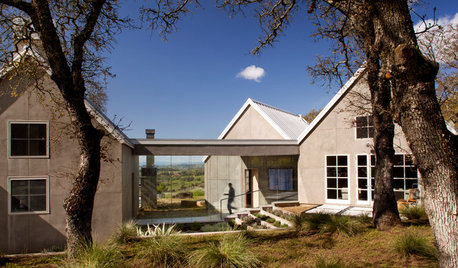

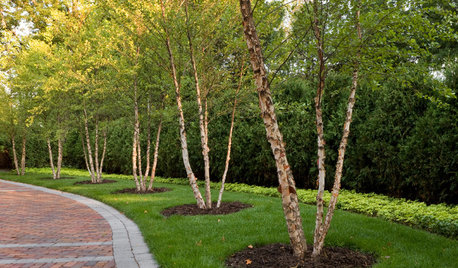
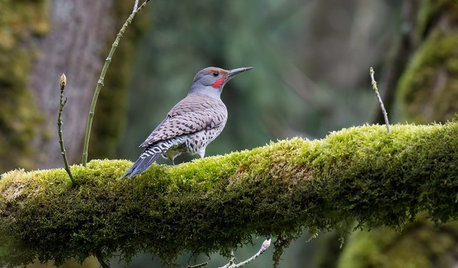
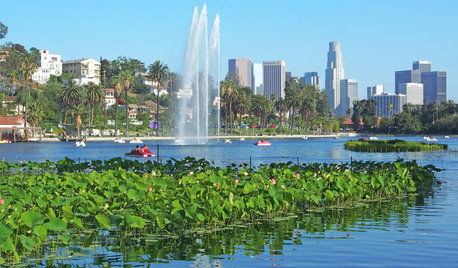
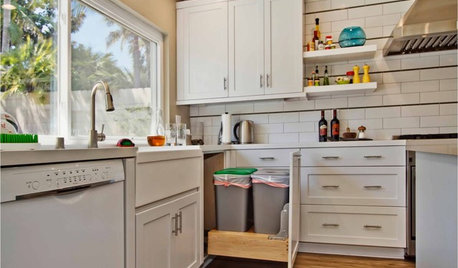
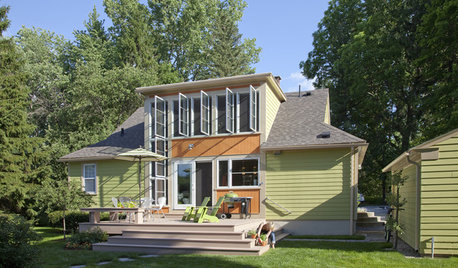
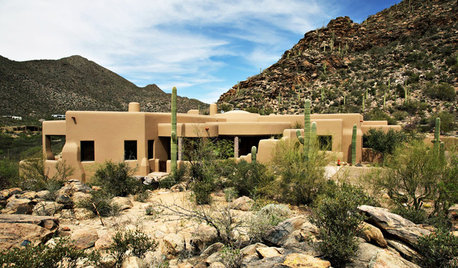
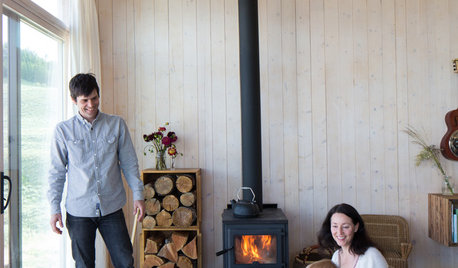










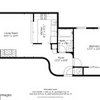
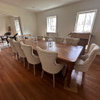

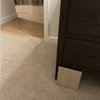
gardengal48 (PNW Z8/9)